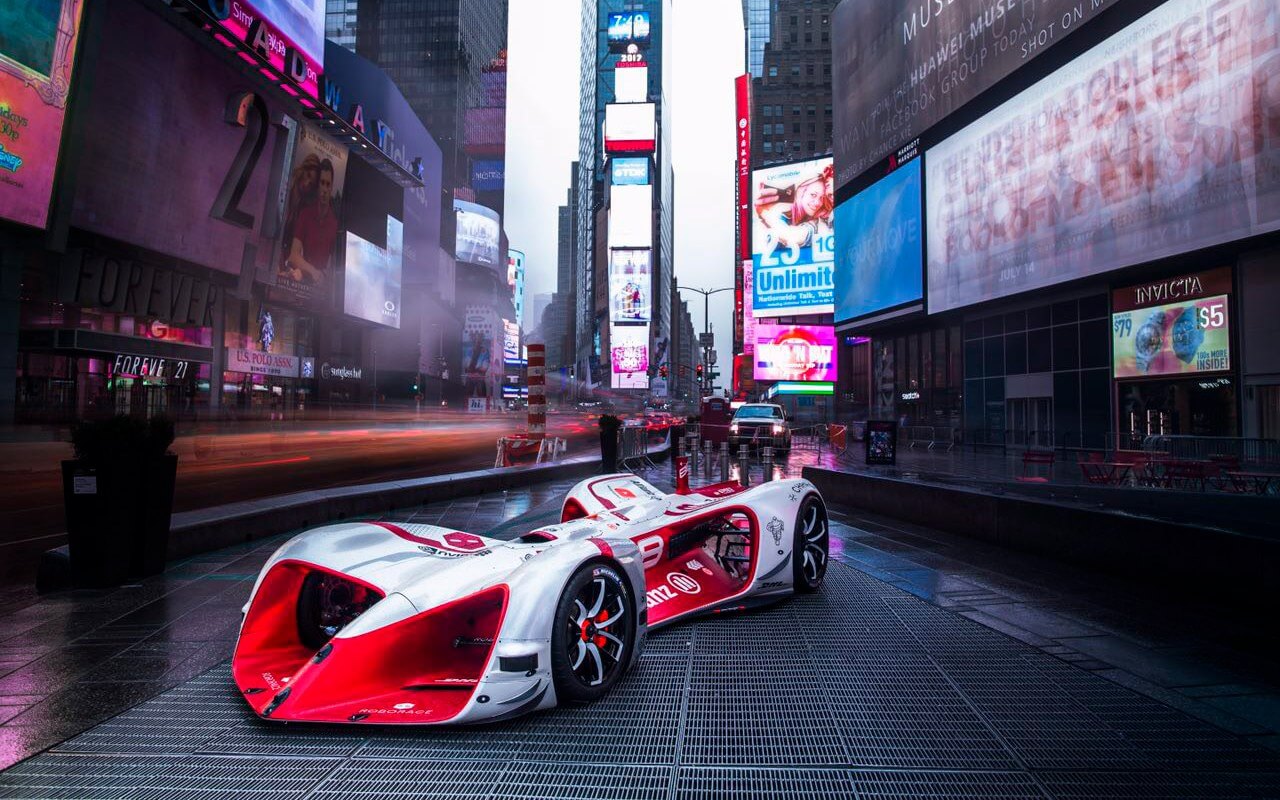What just happened? Daniel Simon's driverless electric car Roborace made history by making the first ever autonomous hill climb at the Goodwood Festival of Speed. The vehicle outperformed a self-driving Mustang with a safety driver beating it by over two minutes. It also managed to complete the track without running into walls.
I have to say; when I saw Siemens retro-fitted 1965 autonomous Ford Mustang attempt the hill climb at the Goodwood Festival of Speed, I was quite unimpressed. In fact, I was somewhat embarrassed for the engineers as the car swerved into hay bales, crept through the course at a snail's pace, and needed intervention from the safety driver numerous times (video below). I will admit my expectations were unreasonably high, but the run caused me to strongly doubt a computer could ever handle such a complex task as an auto race.
However, my faith was somewhat restored when Daniel Simon brought his futuristic electric racer "Roborace" to the start line and took off like a pro. Not only did the car handle turns like it knew what it was doing, but it also did so with a fair amount of speed. It was by no means fast enough to beat a human driver, but it made the Mustang's system look like grade-schoolers designed it.

While Roborace was not flawless, it did get to the finish line without a safety driver and without crashing into any barriers. It also completed the run in less than a minute-thirty. It took the Siemens Mustang a full four minutes to finish the course.
Don't get me wrong; I don't mean to disparage Siemens efforts. Anybody working on autonomous racing is in a pioneering field and should be recognized as innovative. It's just that Simon's system was so much better than what the Mustang had to offer that it just outshined it in every way during the event.
Roborace runs on an underlying carbon chassis and weighs only 1,000 kg. A 540 kW battery powers four independent motors (one for each wheel) creating 1,200 Nm of motor torque.
The brains of the car are powered by dual Nvidia Drive PX2 processors, receiving environmental data from 15 ultrasonic sensors, six "computer vision cameras," five LiDAR units, and front and rear radar.
The Goodwood Hill Climb was an ideal course to test such technology, and with continued progress in the field a whole new form of track racing is emerging.